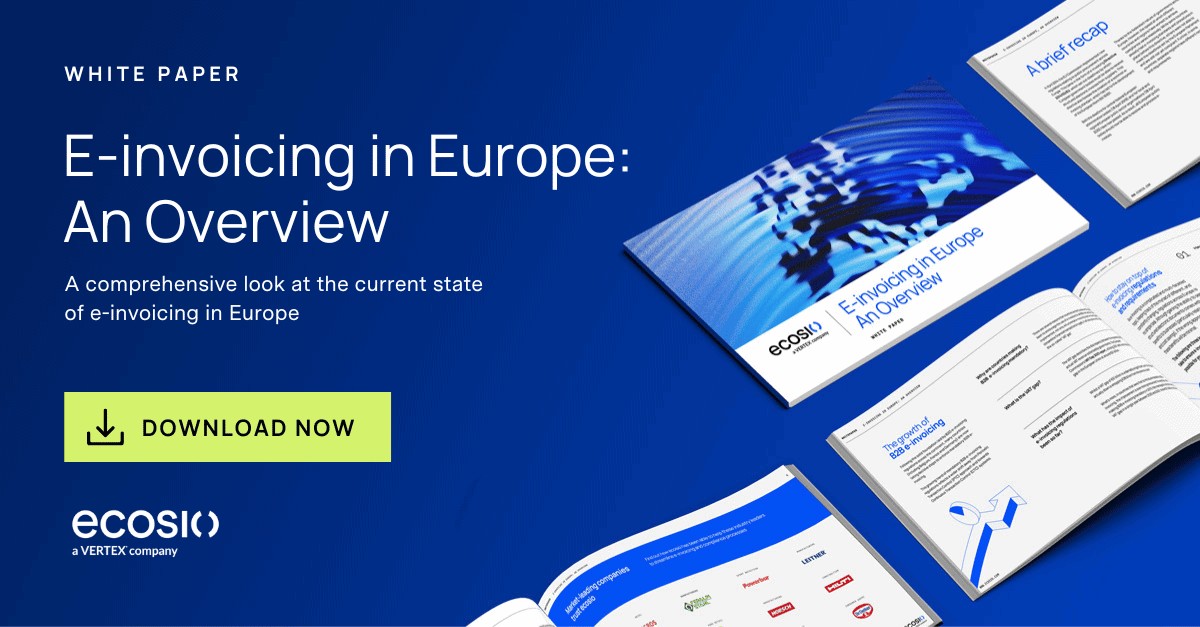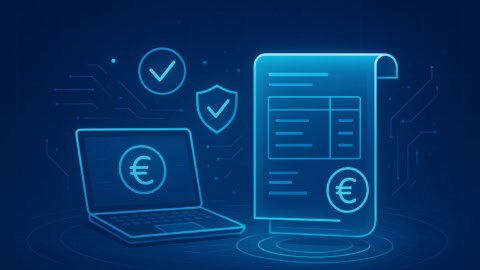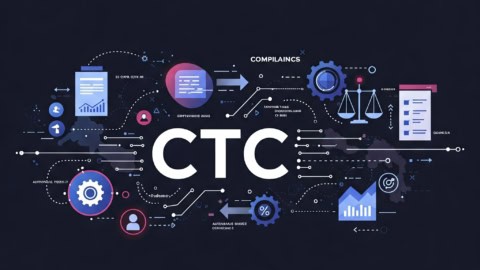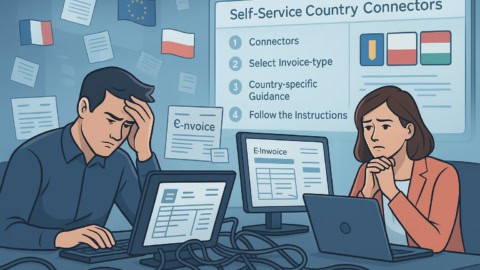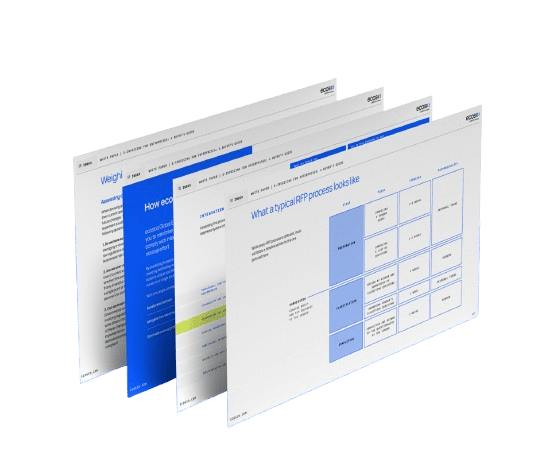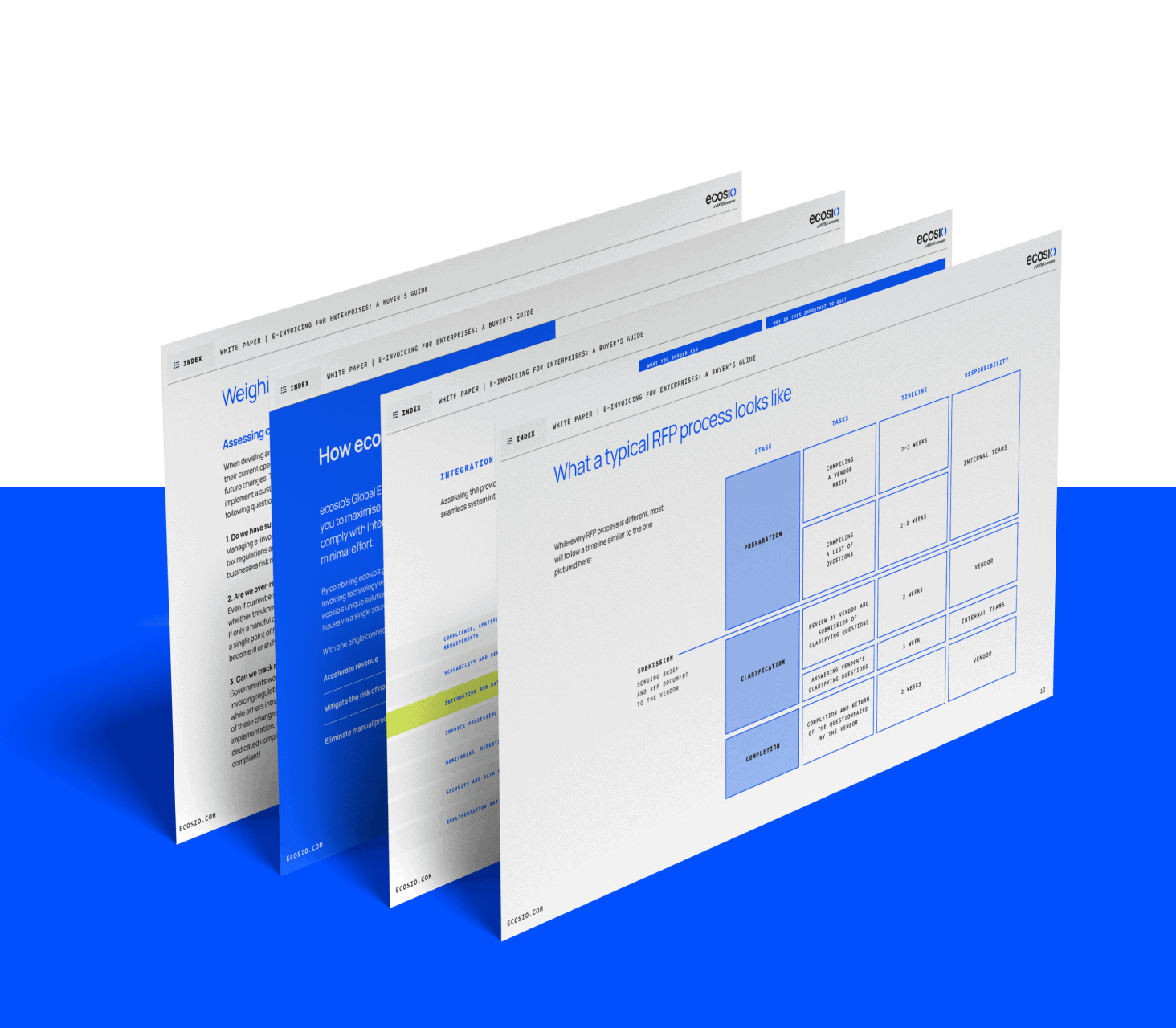E-invoicing has long been a priority in Europe. Back in 2014, the European Parliament and Council adopted Directive 2014/55/EU, requiring all public authorities across the EU to receive structured electronic invoices. The goal was clear: modernise procurement, automate invoicing processes, and capture significant savings.
The potential was huge. With EU public authorities spending roughly €2 trillion annually on supplies and services, even a 1% efficiency gain would be enough to save governments around €20 billion per year.
Like other EU countries, Belgium has, for the past few years, been working in accordance with Directive 2014/55/EU to ensure all business-to-government (B2G) procurement now utilises e-invoices rather than unstructured or paper invoices. But as of 2026, Belgium e-invoicing will be expanding into B2B transactions and later into e-reporting, in line with the EU’s ViDA 2030 reforms.
TL;DR – Key takeaways from this Belgium e-invoicing guide
- From 2026, all B2B invoices in Belgium must use EN 16931 format via Peppol
- Paper and PDF invoices will no longer be accepted
- Real-time e-reporting starts in 2028, adding tax authority validation
- Data errors could delay payments or affect VAT deductibility
- Businesses should prepare by testing Peppol, improving master data, and updating ERP/AP systems
E-invoicing in Belgium explained: why Belgium is making e-invoicing mandatory
Until recently, Belgium’s B2B invoicing landscape remained fragmented. In 2021, an estimated 60% of invoices were exchanged via email, often as simple PDF attachments. Another 25% were still paper-based, while only 15% were true machine-to-machine e-invoices.
This low level of automation was the result of interoperability gaps, limited standardisation, and the absence of a clear legal obligation. As the Belgian Council of Ministers explained when the draft law was approved, the mandate is intended to “create the conditions that will allow e-invoicing to fully break through.” In other words, regulation is being used to build a level playing field where structured e-invoicing can finally scale.
The 2026 mandate: structured B2B e-invoicing becomes the norm
On 1 January 2026, Belgium will take a historic step by making structured e-invoicing compulsory for all domestic B2B transactions involving VAT-registered businesses. This move effectively ends the era of paper invoices and PDF attachments that have long dominated Belgian commerce.
At the heart of the mandate is EN 16931, the European standard that defines the semantic structure of electronic invoices. This ensures that invoices can be read and processed consistently across systems, regardless of the ERP or accounting software in use.
The backbone of the Belgian rollout is the Peppol network, specifically the Peppol BIS 3.0 (UBL) specification. Already established across Europe and beyond, Peppol provides a secure, decentralised model for transmitting business documents. It was chosen not only for its widespread adoption but also because it guarantees interoperability, scalability, and alignment with future EU-wide reporting requirements under ViDA.
While the legislation leaves room for companies to exchange alternative EN 16931-compliant syntaxes, these agreements must be made bilaterally, and every business will still be required to maintain the technical capacity to issue and receive Peppol BIS invoices. In practice, this means that Peppol will become the default infrastructure for Belgian e-invoicing, even if niche use cases persist.
From an Accounts Receivable (AR) perspective, suppliers will need to ensure that all outbound invoices are created in an EN 16931compliant format and transmitted via Peppol (or another mutually agreed syntax). This requires system changes to generate structured files rather than PDFs, as well as proper VAT number validation and master data accuracy checks. Errors at this stage could lead to rejected invoices and delayed payments, making data quality and automation critical.
For Accounts Payable (AP) teams, the transition is equally significant. Incoming invoices will now arrive in structured electronic format, meaning ERP systems must be configured to automatically ingest, validate, and reconcile them. The upside is reduced manual data entry and fewer errors, but only if businesses adapt their internal approval workflows and ensure master data is correctly aligned.
Preparing for 2028: a longer term guide to e-invoicing in Belgium
The 2026 milestone is only the beginning. From 1 January 2028, Belgium intends to move beyond e-invoicing into real-time e-reporting, bringing it in line with the global trend toward Continuous Transaction Controls.
Under this system, each invoice will be transmitted not only to the trading partner but also directly to the Belgian tax authority, creating near real-time visibility of business transactions. This model will be built on an extension of Peppol, known as the five-corner model, where the tax authority effectively becomes an additional participant in the exchange process.
The implications are significant. Annual reporting obligations such as the customer listing will be retired, replaced by immediate transaction level reporting. This will streamline compliance for businesses while simultaneously strengthening the government’s ability to close the VAT gap and detect fraud.
However, several open questions remain. The authorities have not yet clarified how validation errors will be handled, for instance, what happens if an invoice passes the buyer’s checks but fails at the tax authority level. The precise scope of reporting is also undecided: the 2028 framework is confirmed for domestic B2B invoices, but whether it will expand to include cross-border transactions or B2C flows is still under discussion. Guidance on these points is expected closer to 2026, once the first mandate has been implemented and tested.
On the AR side, every invoice issued will be transmitted not only to the buyer, but also directly to the Belgian tax authority. This effectively creates a dual validation step as invoices must be accepted by both the customer and the government. Suppliers will need robust monitoring tools to track statuses and resolve errors quickly for example, if the tax authority rejects an invoice after it has been accepted by the buyer. Invoice lifecycle visibility will become a key requirement.
For AP departments, real-time e-reporting introduces new reconciliation challenges. Buyers will not only need to check whether an invoice is correct from a business perspective but also whether it has been successfully cleared by the tax authority. Discrepancies could affect VAT deductibility, meaning AP teams will play a central role in ensuring compliance. Companies may need to update approval chains and introduce automated matching between tax authority acknowledgments and internal records.
Belgium e-invoicing in the broader European context
Belgium’s e-invoicing mandate is not happening in isolation. It is part of a wider European movement toward harmonised digital VAT reporting, anchored in the European Commission’s “VAT in the Digital Age” (ViDA) initiative.
The ViDA package, formally adopted in 2025, sets out a roadmap for how VAT will be administered across the EU in the coming decade. Its objectives are threefold:
- Promote e-invoicing as the default standard across the EU. EN 16931 compliant structured invoices are now recognised as the European norm.
- Eliminate buyer consent requirements. Under the old rules, businesses could only send structured e-invoices if the buyer agreed. ViDA removes this barrier, paving the way for mass adoption.
- Introduce near real-time reporting for cross-border transactions. By 2030, all intra-EU B2B transactions will need to be reported digitally to tax authorities, replacing today’s summary recapitulative statements (EC Sales Lists).
For Belgium, this means its 2026 and 2028 reforms are more than national experiments, they are stepping stones to full compliance with the EU’s 2030 vision. By moving early, Belgium not only reduces its VAT gap but also ensures that its businesses will transition smoothly when ViDA becomes mandatory across the Union.
Want more information on e-invoicing in Belgium?
For a full overview of e-invoicing in Belgium and a detailed breakdown of the current requirements, please visit our dedicated e-invoicing in Belgium page.
Alternatively, please feel free to contact us today. We are more than happy to provide additional information regarding what you need to do to ensure your business is capable of meeting its future compliance obligations.


